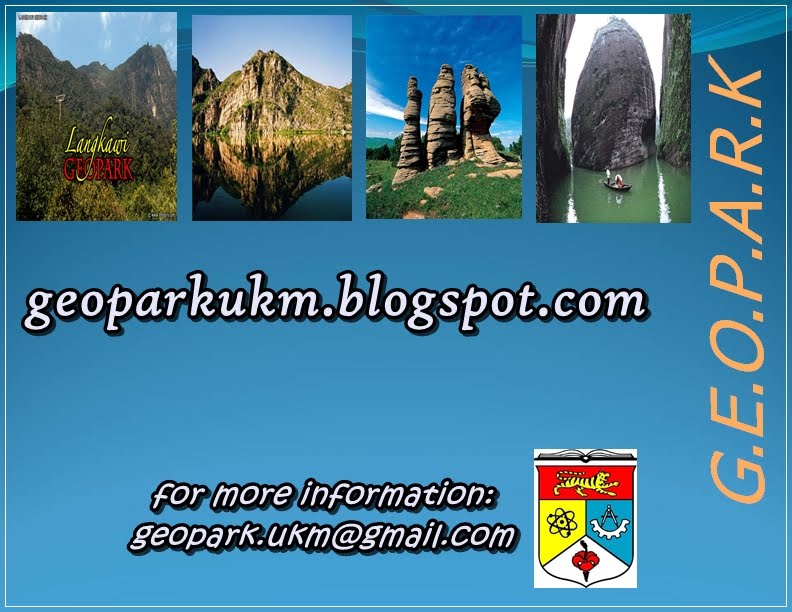
1. Langkawi Geopark is located in northern State of Kedah and it is unique in the sense that it was formed on 99 islands that together made up the legendary Langkawi Archipelago. The total land area of Langkawi Geopark is about 478km2.
2. In Langkawi geological history, much of its geological development was somewhat linked to what had happened 550 million years ago. It started in the deposition of Machinchang sandstone in a latchstring environment during much of the Cambrian time, followed by the submergence of the land during Late Cambrian time (--500m.y.) which allowed the invasion of shallow marine fauna into the proto-Langkawi sea.
3. The continuous subsidence of the sea floor resulted in the formation of thick limestone of Setul Formation during the Ordovician. At the end of Ordovician time (--440m.y.), the sea became too deep to eventually stop the limestone deposition temporarily.
4. What we have in Langkawi today is a combined result of these various processes and the prolonged weathering process that took place ever since the Langkawi land was brought to the surface around 220 million years ago.
5. As a result, we have a beautiful mountainous range of Machinchang sandstone at the northwestern corner of Langkawi Island, the conical Gunung Raya granite at the center and a rugged karst terrain of Setul Limestone in the eastern part of Langkawi. In the southwest of Langkawi islands, the Singa formation dominated while the Chu ping Limestone dominates the western part of Dayang Bunting Island. Some of the landscapes are truly outstanding, particularly those of the Machinchang and the karstic limestone in the eastern part of Langkawi.
.jpg)

No comments:
Post a Comment